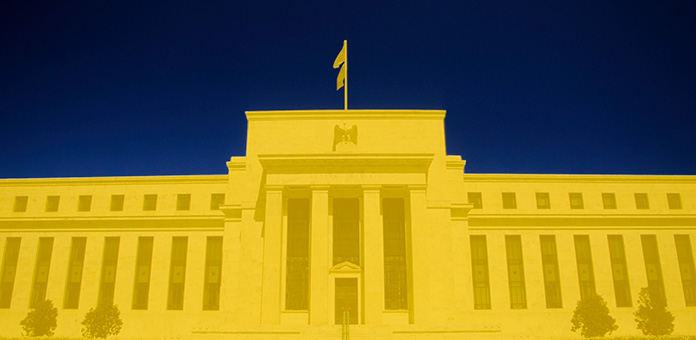
The Board of Governors of the Federal Reserve System makes it clear that they understand their role as an organization supposedly free from political influence. According to their website, “The Federal Reserve, like many other central banks, is an independent government agency but also one that is ultimately accountable to the public and the Congress.” 1
Further, they point out the Federal Reserve is structured “…to ensure that its monetary policy decisions … do not become subject to political pressures that could lead to undesirable outcomes.” However, this is a position that can be called into question and analyzed.
The Power of Suggestion in Financial Markets
Experienced traders and gold buyers understand the perceived realities about interest rates. Specifically, traditional wisdom posits a negative correlation between gold prices and interest rates. Supposedly, if bonds and other instruments generate substantial current income, they become more attractive to certain investors and funds, creating less demand and lower prices for gold and other precious metals. This is why the actions of the FOMC affect commodity prices so directly.
Unfortunately for the nation’s monetary policies, the decades-long zero and near-zero Fed rates have left the central bank with few tools in their bag to deal with the ongoing financial malaise. (This is also the case – or worse – with most western nations and central banks.) As a result, the markets have seen many members of the FOMC use the bully pulpit to affect and influence markets over the past two and more years.
The Fed’s Statements See-Saw Back and Forth
The on-again-off again comments about possible changes in the rate by Fed Chair Janet Yellen and other board members have often contradicted themselves. Collectively, these actions have created an ongoing debate about potential raises, when and if they will occur, and how significant they will be. This produces such headlines as “All Eyes on FOMC Meeting This Week,” with media and analysts making efforts to use their crystal balls to determine what might happen.
While the FOMC continues to play what many consider politics with hints and threats of more increases, this clouds the reality that it has already backed off to just two probable hikes, if that, for 2016. Even then, these short-term factors ignore the more significant political realities of serious global financial issues.
Short-Term Vs. Long-Term Stances
Short-term speculators and traders are correct in reacting to this negative correlation. However, the more experienced market participants understand that “a long-term review of the respective paths and trends of interest rates and gold prices reveals that no such relationship actually exists,” as articulated on Investopedia. 2
The Real Issue—Worthless Paper Money
It is the noted overall economic picture that tells the real story about gold prices relative to interest rates. For long-term investors in gold and those seeking to protect the purchasing power of their portfolio, they know the Butcher’s Bill on increasingly worthless paper currency is past due.
Whether it is the Brexit, Grexit or other unforeseeable economic circumstance that will end the artificial environment created by massive government debt and unrelenting use of government printing presses, the ultimate impact of these policies is that they decrease our confidence in the ability of governmental leaders to fix a broken economy. Meanwhile, gold and silver maintain value and show long-term consistent growth.
Additional Sources:
1 – https://www.federalreserve.gov/faqs/about_12799.htm
2 – http://www.investopedia.com/articles/investing/100915/effect-fed-fund-rate-hikes-gold.asp

